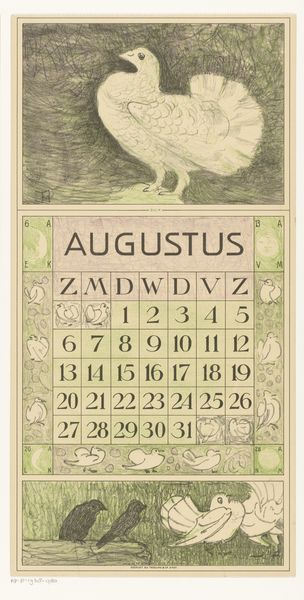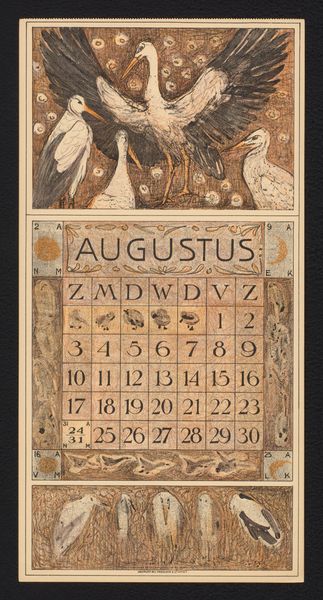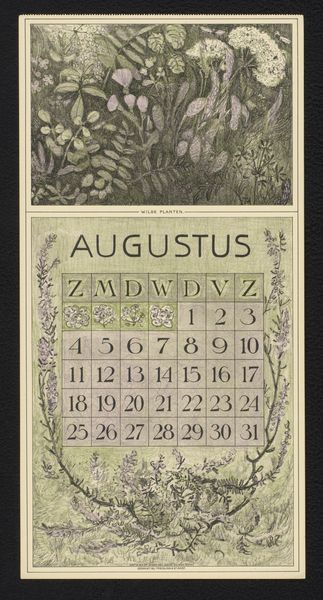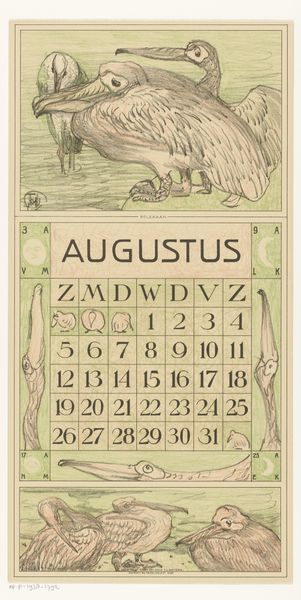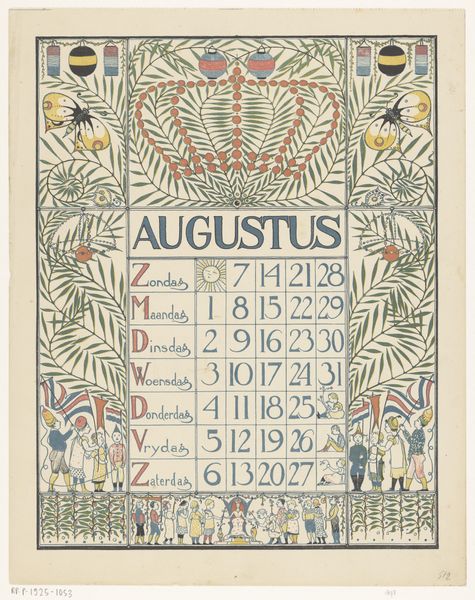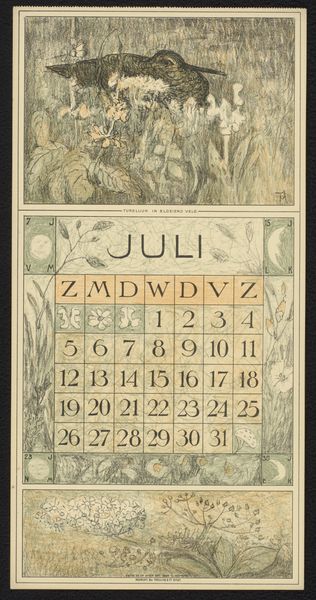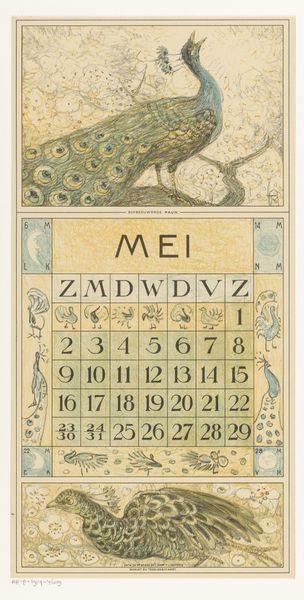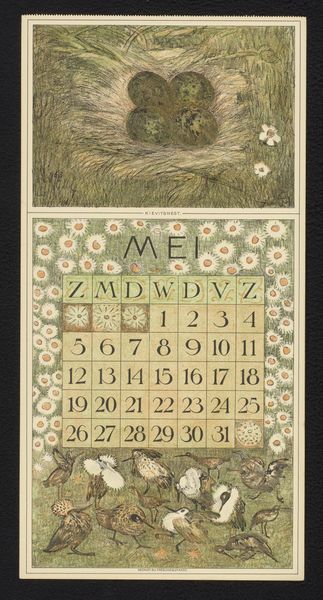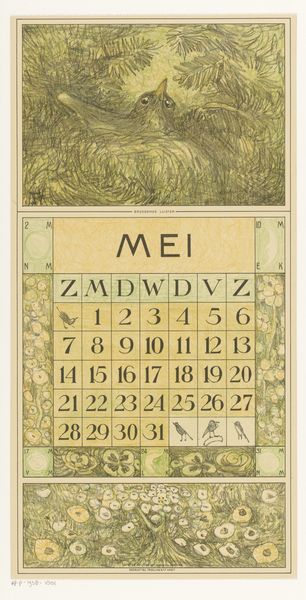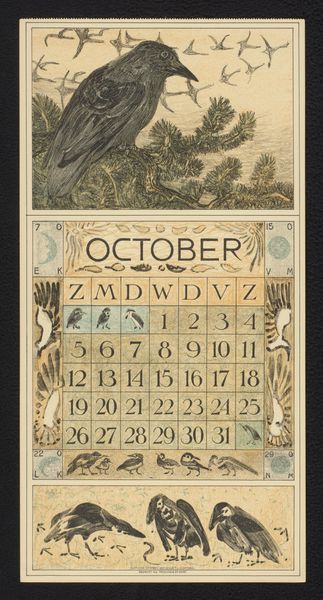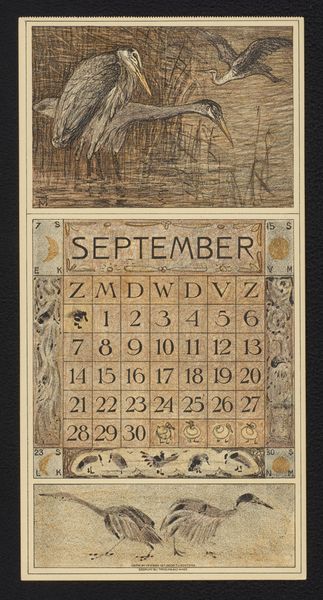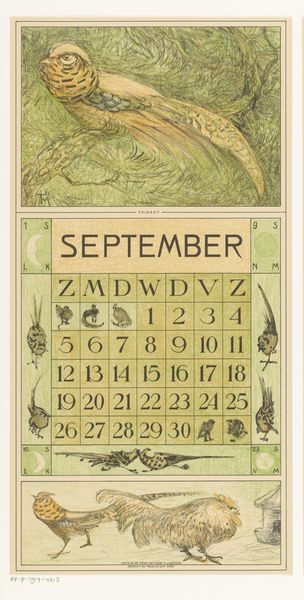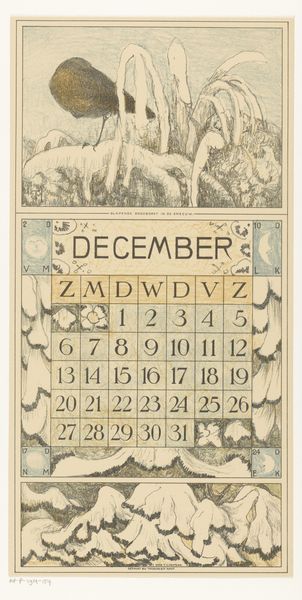
drawing, print, paper, woodcut
#
drawing
#
art-nouveau
# print
#
landscape
#
paper
#
woodcut
Dimensions: height 420 mm, width 210 mm
Copyright: Rijks Museum: Open Domain
Editor: This is Theo van Hoytema's "August Calendar with Robin," a 1913 woodcut print. It has a delicate feel, with a robin perched above a traditional calendar grid, framed by flora. The calendar itself seems secondary to the natural world depicted. What do you see in this piece? Curator: The overwhelming image that arises for me is a longing for an imagined idyllic time, reflecting the ethos of the Art Nouveau movement. It speaks of cycles, of course, with the month laid bare. Editor: Cycles? How so? Curator: Notice the integration of floral motifs surrounding the numbers; those reinforce the cyclical nature of time and growth, and they bring in ideas of birth, death and rebirth with images of nature, which is consistent with fin-de-siecle tastes. Consider how August itself is placed – prominently featured – indicating a peak of summer and a change of seasons. There is a constant rebirth each month with cyclical renewal that marks calendars through our cultural memory, isn't it? Editor: Yes, that emphasis on August as a peak is interesting. And, what of the robin? Curator: Birds have a significant history as messengers between worlds. Here, the Robin evokes freedom and even transcendence. Hoytema uses familiar imagery - a beloved garden bird, and a blooming floral background - to speak to human desires for a simpler connection with nature and perhaps, spirituality. The robin represents transition, change, and also announces good tidings. The cultural context provides a background to better interpret the symbolic meaning and impact behind van Hoytema's illustration. What will this augur for its users? What might people see in August during this historical era? Editor: I never would have seen that much symbolism. I see now the complex cultural connections to cycles, and how he connects it all together with the calendar. Thanks. Curator: The image also reinforces our connection with history. What visual traces and psychological connections will these prints have on audiences in later years? These questions enrich how we can continue to interpret van Hoytema’s illustrations.
Comments
No comments
Be the first to comment and join the conversation on the ultimate creative platform.

